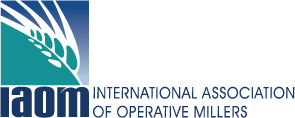IAOM 2024 Educational Sessions
Wednesday, April 17 | 7:30 a.m.
A View on the Future of Flour Milling in the 21st Century: Navigating the Intersection of AI, Plant Genetics, Public Health, Sustainability, and Shifting Consumer Demands
Peter Levangie
President & CEO, Bay State Milling
We are living in a time of rapid and profound change – the accelerating integration of Artificial Intelligence (AI), advancements in plant genetics, climate change & sustainability imperatives, heightened public health awareness, and evolving consumer preferences. The presentation will explore how these external forces might impact the future of flour milling and how flour millers might want to think navigating these potentially revolutionary changes.
The forces at play:
- AI Revolutionizing Flour Milling:
Artificial Intelligence is set to revolutionize the world and the flour milling industry will not be immune. AI-driven technologies are enhancing precision and efficiency across manufacturing processes. Real-time data analysis and predictive algorithms optimize grain selection, milling techniques, and quality control, ensuring consistent flour quality while reducing waste. As AI continues to evolve, it will become an indispensable tool for millers seeking to maintain competitiveness.
- Plant Genetics and Flour Diversity:
Plant genetics play a pivotal role in the future of flour milling. Ongoing research is yielding wheat varieties tailored to specific milling and nutritional requirements. This innovation extends beyond yield improvements, focusing on disease resistance, nutritional content, and functional attributes. Flour millers are leveraging these advances to meet diverse consumer demands, from artisanal specialty flours to allergen-free and nutritionally enhanced options.
- Public Health and Nutritional Awareness:
Public health considerations are increasingly influencing the food and agricultural system. As nutrition and human science advance while health care costs continue to escalate, incentives for investing in preventive health through our diets will grow. This is both opportunity and risk for flour millers.
- Climate Change and the Growing Sustainability Imperative:
Climate change and its costs will continue to motivate stakeholders to elevate sustainability for governments, companies, NGOs, and citizens. Reducing environmental impacts, minimizing waste, and addressing water and energy consumption are key priorities. Companies are already taking active measures today against these priorities. What might the future look like?
- Navigating Shifting Consumer Preferences:
With the COVID years of consumer choice constrained by supply issues behind us, the diversification of consumer preferences within food is reemerging. Consumers are wanting more from their food experiences – more taste, more wellness, more convenience, and more personalization. In the US, flour-based foods still maintain a dominant role in most American dets. How can milling companies contribute to preventing a loss of of share of stomach?
As seen through these large scale trends, the future of flour milling looks more dynamic than ever. The presentation will conclude with some recommendations on how flour millers might prepare for and perhaps even thrive in this evolving environment, delivering flours that meet the demands of a changing world while upholding quality, health, safety, and sustainability standards.
